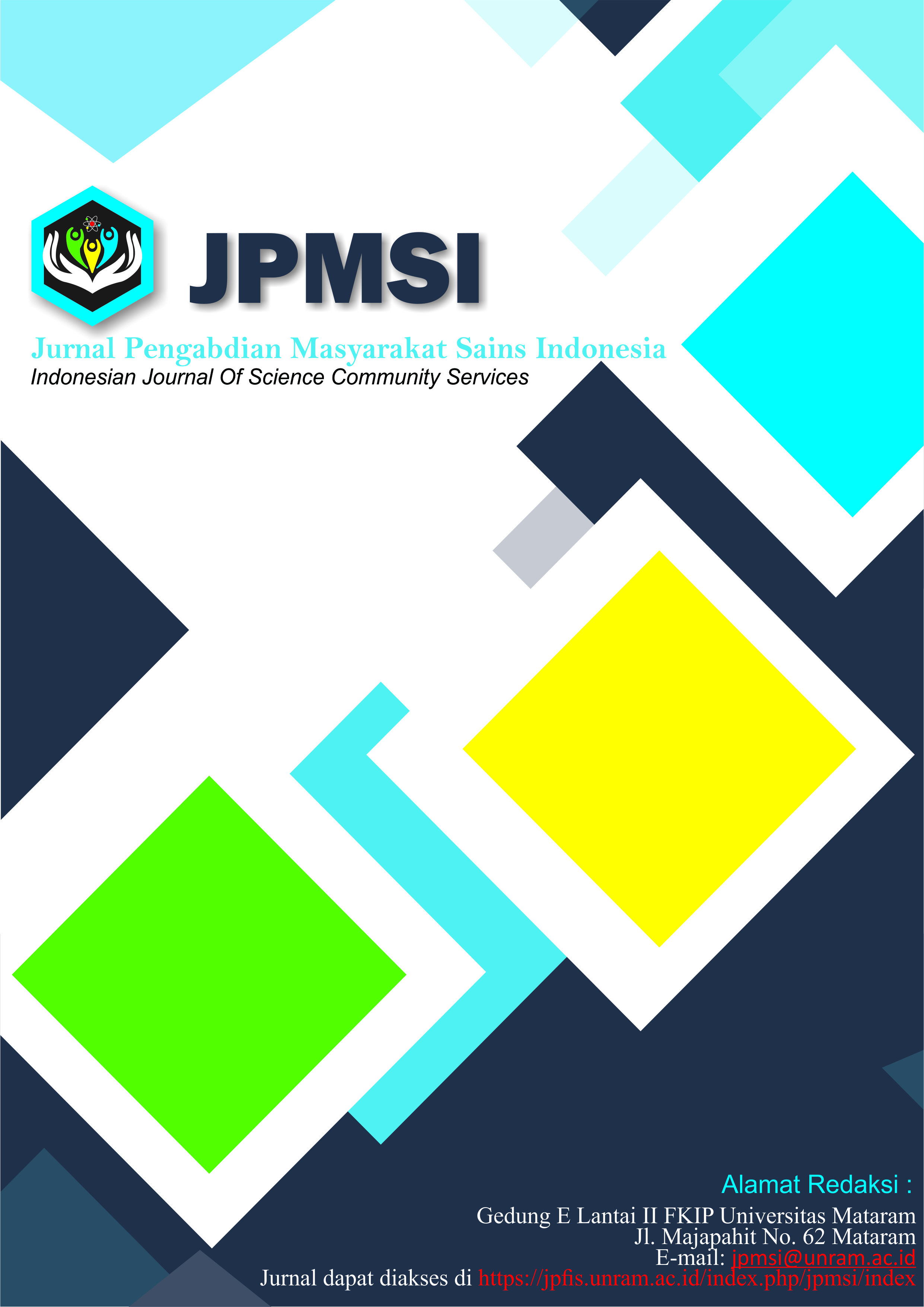Edukasi tentang Penyakit Myastenia Gravis pada Pengunjung Poliklinik Neurologi Rumah Sakit Universitas Mataram
Abstract
Myasthenia gravis is one of the most common autoimmune diseases at the neuromuscular junction. Although this disease is rare, the incidence of this disease is believed to have increased in the last seven decades. This community service activity aims to provide education to the public regarding myasthenia gravis. This community service activity was carried out in the form of counseling at the Neurology Polyclinic of UNRAM Hospital on Friday, January 20 2023. All participants were asked to take part in all counseling activities which consisted of pre-test activities, delivery of material on the topic of myasthenia gravis, and post-test. The enthusiasm of the participants in this activity was presented in the form of photo documentation. Statistical analysis using paired t-test was carried out to analyze the difference between the pre-test and post-test mean values ​​and the results were considered significant if a p value <0.05 was obtained. As many as 23 participants who attended the Neurology Polyclinic at UNRAM Hospital enthusiastically participated in the whole series of activities. The average participant post-test score was significantly higher than the pre-test means score (p = 0.025). This activity was able to increase the participants' knowledge about myasthenia gravis.
References
Bubuioc, A. M., et al. (2021). The Epidemiology of Myasthenia Gravis. Journal of Medicine and Life, 14(1), 7–16. doi: https://doi.org/10.3390/ jcm10112235.
Dresser, L., Wlodarski, R., Rezania, K., & Soliven, B. 2021. Myasthenia Gravis: Epidemiology, Pathophysiology and Clinical Manifestations. Journal of Clinical Medicine, 10, 2235. doi: https://doi.org/10.3390/ jcm10112235.
Hassan, A. A., Ragheb, M. M., Taha, A. S., & Mohamed, R. F. (2022). Effectiveness of Educational Program on Fatigue and Activities of Daily Living among Myasthenia Gravis Patients. Journalof Nursing Science - Benha University, 3(2), 510–22.
Jeong, A., et al. (2018). Factors Associated with Quality of Life of People with Myasthenia Gravis. PLoS ONE, 13(11), e0206754. doi: https://doi.org/ 10.1371/journal.pone.0206754.
Salari, N., et al. (2021). Global Prevalence of Myasthenia Gravis and the Effectiveness of Common Drugs in Its Treatment: A Systematic Review and Meta-Analysis. Journal of Translational Medicine, 19, 516. doi: https://doi.org/10.1186/s12967-021-03185-7.









